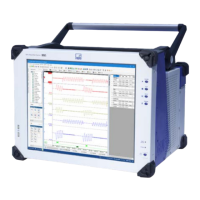GEN7iB
293
GEN series SYNCHRONIZATION METHODS
GEN series SYNCHRONIZATION METHODS
14
If two sets of Sync and Follow up messages are sent, then the drift between the two
clocks(thephasechangerate)canbefoundbycomparingtheΔtimebetweenthe
successive sync messages.
'ULIW
Grand masters might have a setting to control the number of synchronization events sent
per second time interval. For GEN series system to synchronize to a PTP grandmaster
within its published specications, a minimum of one PTP synchronization per second is
required. Two updates per second improves the short-term stability. Higher update rates
have not proven to be more stable.
Switch delays
The majority of Ethernet switches on the market use a store-and-forward method to
decide where to send individual packets. Incoming packets are stored in local mem-
ory. The packet is checked for errors before being sent out from the appropriate port/
ports. This process introduces variations in the forward and return latency time of the
packet. The variations in these delays mean that the assumption that packet delay is
the same in each direction is invalid, thus rendering the path delay calculations of PTP
inoperable. This issue has been compensated for with the use of two special switches,
boundary clocks and transparent clocks. For more information, please refer to „PTP
switch types“ on page 286.

